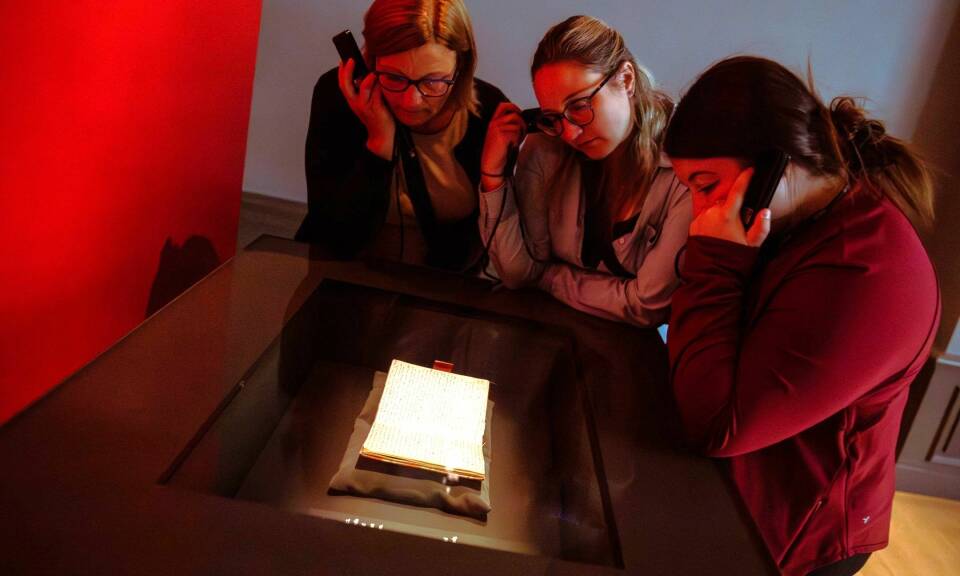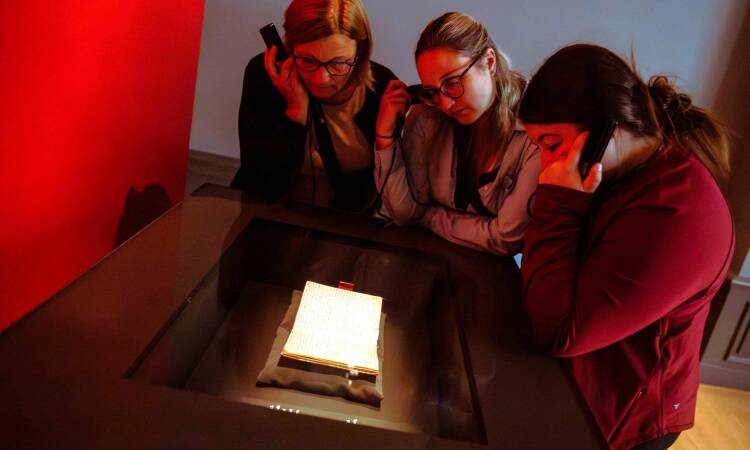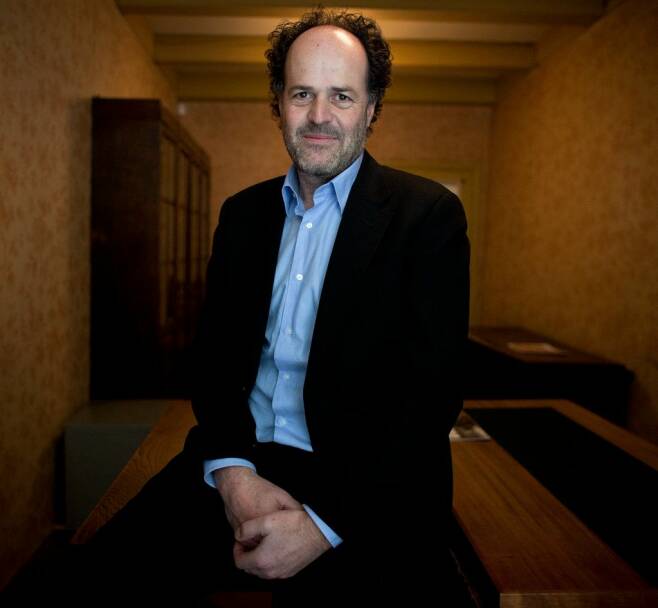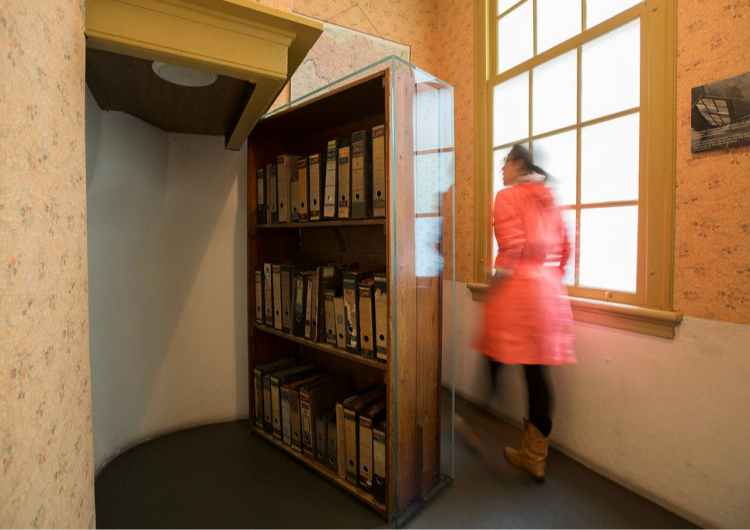


FOTO: ANP / SABINE JOOSTEN
READING TIME: 4 MINUTES



Ronald Leopold (1960) studied History at the UG, and has been the Director of the Anne Frank Foundation since 2011. The Holocaust Remembrance Lecture entitled 'Seeing leads to remembering, remembering leads to doing' that Leopold gave on 28 January 2024 at the Groningen Synagogue can be downloaded here. Leopold is the co-author of Anne Frank. Life, Work and Meaning (2023).


PROPOSITION
Hanneke van der Wal – Medical Sciences
‘ No’ is the start of the negotiation, not the end of it’ (Christopher Voss).
Polarization, rising anti-Semitism, a Holocaust-denying projection on the façade of a building:
these are, to put it mildly, not the easiest times to be the director of the Anne Frank Foundation.
Yet, Ronald Leopold (64) remains optimistic. ‘Every year, hundreds of thousands of young people come to Amsterdam to do all kinds of things you want to do when you’re young. Over 200,000 of them also find their way to the Anne Frank House and are touched by her voice.’
Anne Frank was born on 12 June 1929 in Germany. In 1934, the Frank family fled to Amsterdam. In 1942, they went into hiding in The Secret Annex, now part of the Anne Frank House. In 1944, the family was betrayed and deported.
Anne died in the Bergen-Belsen concentration camp in February 1945.
What is it that appeals to young people who come to the Anne Frank House?
‘Look, this is a strange museum. A museum with empty rooms. That’s how Otto Frank, Anne’s father, wanted it, because it makes the absence of those who are no longer with us very perceptible. But the exhibition also shows what Anne stood for: a fourteen-year-old who was afraid of the future, who felt discriminated, unfree, and trapped. All those young visitors from all over the world have their own history, their dreams and ideals, and worries about the future. They are looking for a voice to assert them. For everyone, Anne’s story resonates differently. History sheds a searchlight on the present.’
Which sentence written by Anne Frank resonates with you personally?
‘I am immediately reminded of a sentence from a diary letter she wrote on 11 April 1944. Anne was almost 15 years old at the time. Spring was in the air, but Anne was stuck inside and anxious because of an attempted burglary just moments before she wrote this. You sense in every fibre of your being that this is not going to end well. She wrote at that point: ‘Let me be myself, and then I’m satisfied’. By that, she means: give me the freedom to discover who I am, allow room for self-criticism and questioning, room for candour, which is what you do in your teenage years but should be doing throughout your whole life from time to time, I suppose. That is also the message of the Anne Frank House: there is no one fixed message. Take history in, give it meaning, and act on it.
In the coming year, billions of people around the world will go to the polling stations. At the same time, polarization is rife. What message can the Anne Frank House offer?
‘That all that is happening starts with people’s choices. Anne was born in 1929, in a democratic country, and died in 1945 under horrific circumstances. Since the summer of 1942 until the end of 1943, in a period of 15-16 months, over 100,000 Jews were deported from the Netherlands and killed. That is not to say that by making the wrong choice, that train to Auschwitz will be running again tomorrow. But it is a matter of a series of choices. History does not repeat itself, but it certainly gives food for thought. The role of the Anne Frank House is to offer guidance for vigilance and connection.’
TEXT: SARA PLAT
PHOTO: PHOTOCOLLECTION ANNE FRANK HUIS / CRIS TOALA OLIVARES / ROSA KRASTEL


READING TIME: 4 MINUTES

with everyone

PROPOSITION
Hanneke van der Wal – Medical Sciences
‘ No’ is the start of the negotiation, not the end of it’ (Christopher Voss).
Anne Frank was born on 12 June 1929 in Germany. In 1934, the Frank family fled to Amsterdam. In 1942, they went into hiding in The Secret Annex, now part of the Anne Frank House. In 1944, the family was betrayed and deported. Anne died in the Bergen-Belsen concentration camp in February 1945.


Ronald Leopold (1960) studied History at the UG, and has been the Director of the Anne Frank Foundation since 2011. The Holocaust Remembrance Lecture entitled 'Seeing leads to remembering, remembering leads to doing' that Leopold gave on 28 January 2024 at the Groningen Synagogue can be downloaded here. Leopold is the co-author of Anne Frank. Life, Work and Meaning (2023).

What is it that appeals to young people who come to the Anne Frank House?
‘Look, this is a strange museum. A museum with empty rooms. That’s how Otto Frank, Anne’s father, wanted it, because it makes the absence of those who are no longer with us very perceptible. But the exhibition also shows what Anne stood for: a fourteen-year-old who was afraid of the future, who felt discriminated, unfree, and trapped. All those young visitors from all over the world have their own history, their dreams and ideals, and worries about the future. They are looking for a voice to assert them. For everyone, Anne’s story resonates differently. History sheds a searchlight on the present.’
Which sentence written by Anne Frank resonates with you personally?
‘I am immediately reminded of a sentence from a diary letter she wrote on 11 April 1944. Anne was almost 15 years old at the time. Spring was in the air, but Anne was stuck inside and anxious because of an attempted burglary just moments before she wrote this. You sense in every fibre of your being that this is not going to end well. She wrote at that point: ‘Let me be myself, and then I’m satisfied’. By that, she means: give me the freedom to discover who I am, allow room for self-criticism and questioning, room for candour, which is what you do in your teenage years but should be doing throughout your whole life from time to time, I suppose. That is also the message of the Anne Frank House: there is no one fixed message. Take history in, give it meaning, and act on it.
In the coming year, billions of people around the world will go to the polling stations. At the same time, polarization is rife. What message can the Anne Frank House offer?
‘That all that is happening starts with people’s choices. Anne was born in 1929, in a democratic country, and died in 1945 under horrific circumstances. Since the summer of 1942 until the end of 1943, in a period of 15-16 months, over 100,000 Jews were deported from the Netherlands and killed. That is not to say that by making the wrong choice, that train to Auschwitz will be running again tomorrow. But it is a matter of a series of choices. History does not repeat itself, but it certainly gives food for thought. The role of the Anne Frank House is to offer guidance for vigilance and connection.’
Polarization, rising anti-Semitism, a Holocaust-denying projection on the façade of a building: these are, to put it mildly, not the easiest times to be the director of the Anne Frank Foundation. Yet, Ronald Leopold (64) remains optimistic. ‘Every year, hundreds of thousands of young people come to Amsterdam to do all kinds of things you want to do when you’re young. Over 200,000 of them also find their way to the Anne Frank House and are touched by her voice.’
TEXT: SARA PLAT
PHOTO: PHOTOCOLLECTION ANNE FRANK HUIS / CRIS TOALA OLIVARES / ROSA KRASTEL